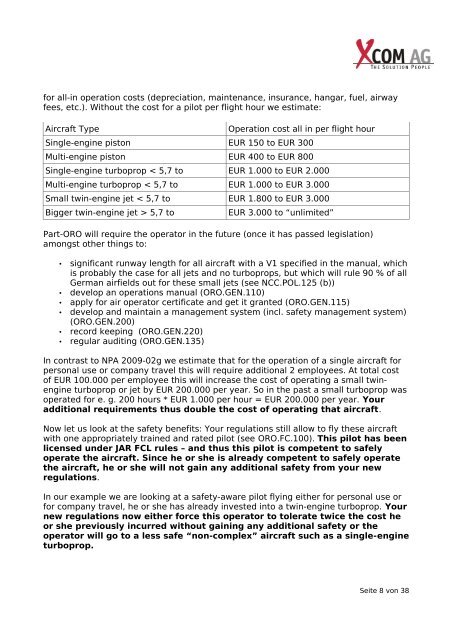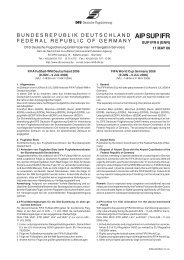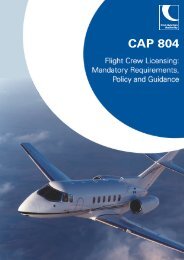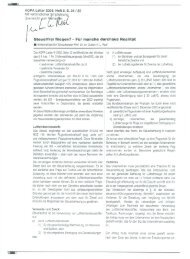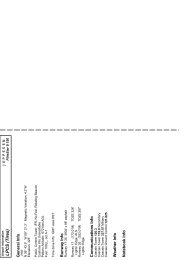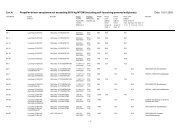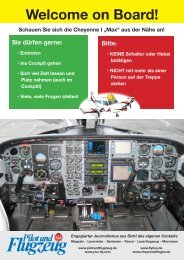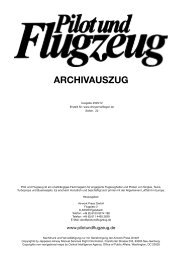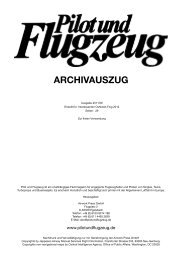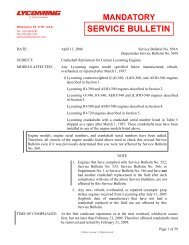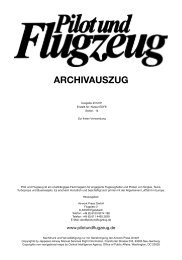Dear Mr. Kneepkens, thank you for your deliberate answer dated ...
Dear Mr. Kneepkens, thank you for your deliberate answer dated ...
Dear Mr. Kneepkens, thank you for your deliberate answer dated ...
Create successful ePaper yourself
Turn your PDF publications into a flip-book with our unique Google optimized e-Paper software.
<strong>for</strong> all-in operation costs (depreciation, maintenance, insurance, hangar, fuel, airway<br />
fees, etc.). Without the cost <strong>for</strong> a pilot per flight hour we estimate:<br />
Aircraft Type<br />
Operation cost all in per flight hour<br />
Single-engine piston EUR 150 to EUR 300<br />
Multi-engine piston EUR 400 to EUR 800<br />
Single-engine turboprop < 5,7 to EUR 1.000 to EUR 2.000<br />
Multi-engine turboprop < 5,7 to EUR 1.000 to EUR 3.000<br />
Small twin-engine jet < 5,7 to EUR 1.800 to EUR 3.000<br />
Bigger twin-engine jet > 5,7 to<br />
EUR 3.000 to “unlimited”<br />
Part-ORO will require the operator in the future (once it has passed legislation)<br />
amongst other things to:<br />
• significant runway length <strong>for</strong> all aircraft with a V1 specified in the manual, which<br />
is probably the case <strong>for</strong> all jets and no turboprops, but which will rule 90 % of all<br />
German airfields out <strong>for</strong> these small jets (see NCC.POL.125 (b))<br />
• develop an operations manual (ORO.GEN.110)<br />
• apply <strong>for</strong> air operator certificate and get it granted (ORO.GEN.115)<br />
• develop and maintain a management system (incl. safety management system)<br />
(ORO.GEN.200)<br />
• record keeping (ORO.GEN.220)<br />
• regular auditing (ORO.GEN.135)<br />
In contrast to NPA 2009-02g we estimate that <strong>for</strong> the operation of a single aircraft <strong>for</strong><br />
personal use or company travel this will require additional 2 employees. At total cost<br />
of EUR 100.000 per employee this will increase the cost of operating a small twinengine<br />
turboprop or jet by EUR 200.000 per year. So in the past a small turboprop was<br />
operated <strong>for</strong> e. g. 200 hours * EUR 1.000 per hour = EUR 200.000 per year. Your<br />
additional requirements thus double the cost of operating that aircraft.<br />
Now let us look at the safety benefits: Your regulations still allow to fly these aircraft<br />
with one appropriately trained and rated pilot (see ORO.FC.100). This pilot has been<br />
licensed under JAR FCL rules – and thus this pilot is competent to safely<br />
operate the aircraft. Since he or she is already competent to safely operate<br />
the aircraft, he or she will not gain any additional safety from <strong>you</strong>r new<br />
regulations.<br />
In our example we are looking at a safety-aware pilot flying either <strong>for</strong> personal use or<br />
<strong>for</strong> company travel, he or she has already invested into a twin-engine turboprop. Your<br />
new regulations now either <strong>for</strong>ce this operator to tolerate twice the cost he<br />
or she previously incurred without gaining any additional safety or the<br />
operator will go to a less safe “non-complex” aircraft such as a single-engine<br />
turboprop.<br />
Seite 8 von 38


